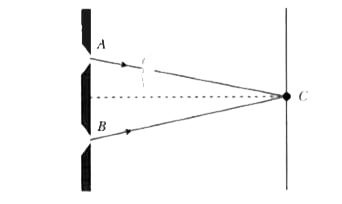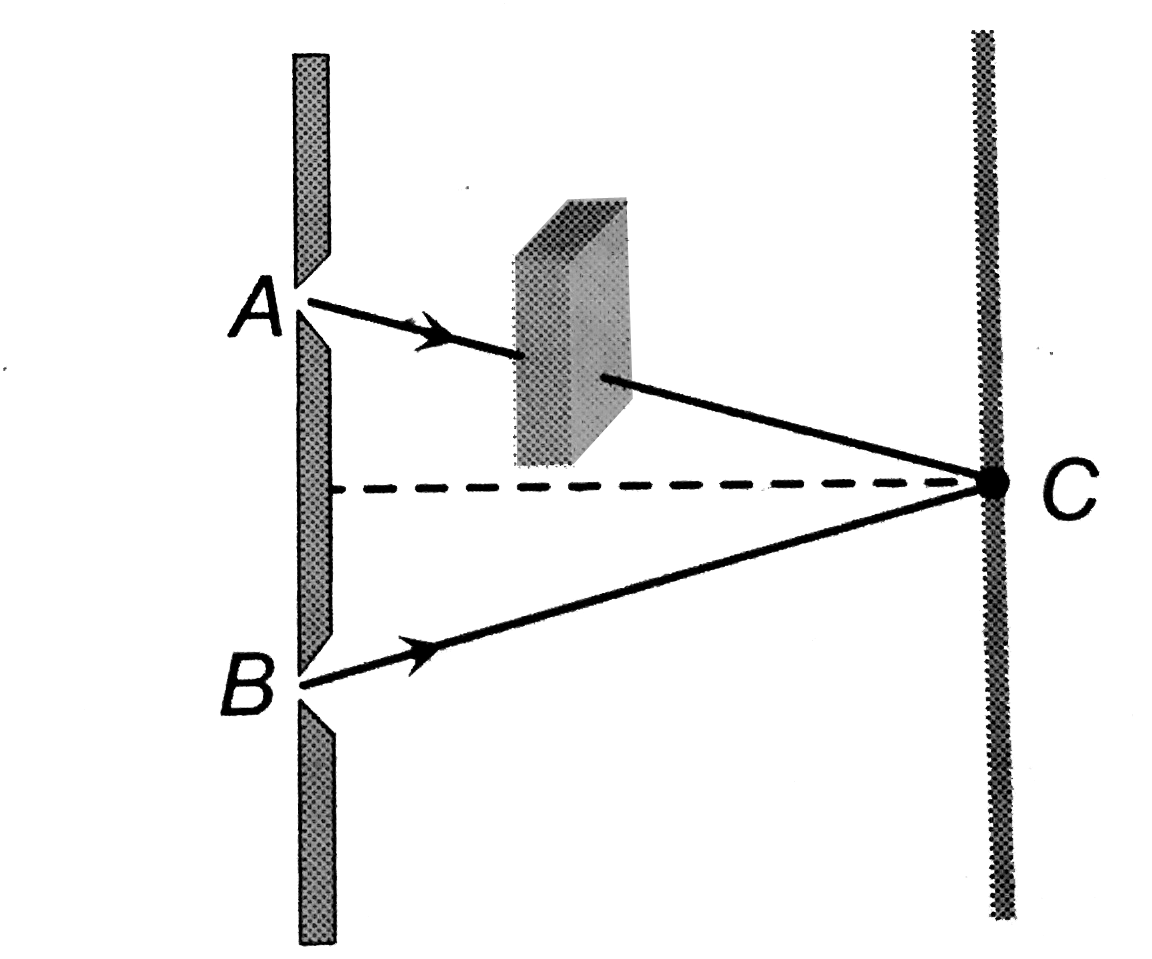A plane monochromatic light wave falls normally on a diaphragm with two narrow slits separated by 2.5mm. The fringe pattern is formed on a screen 100 cm behind the diaphragm. By what distance will these fringes be displaced, when one of the slits is covered by a glass plate of thickness
2mm
1mm
3mm
4mm
The correct Answer is:A
Shift =
=2mm .
Topper's Solved these Questions
- INTERFERENCE AND DIFFRACTION OF LIGHTBook:DC PANDEYChapter:INTERFERENCE AND DIFFRACTION OF LIGHTExercise:Objective question
Explore 2 Videos
- INTERFERENCE AND DIFFRACTION OF LIGHTBook:DC PANDEYChapter:INTERFERENCE AND DIFFRACTION OF LIGHTExercise:Level 1Subjective
Explore 22 Videos
- INTERFERENCE AND DIFFRACTION OF LIGHTBook:DC PANDEYChapter:INTERFERENCE AND DIFFRACTION OF LIGHTExercise:Level 1 Assertion And Reason
Explore 10 Videos
- GRAVITATIONBook:DC PANDEYChapter:GRAVITATIONExercise:All Questions
Explore 120 Videos
- MAGNETIC FIELD AND FORCESBook:DC PANDEYChapter:MAGNETIC FIELD AND FORCESExercise:Medical entrance s gallery
Explore 59 Videos
Similar Questions
A plane monochromartic light wave falls normally on a diaphragm with two narrow slist separated bya distance d=2.5mm. A fringe pattern is formed on a screen placed at a distance l=100cm behind the diaphragm. By what distance and in which direction will these fringes be dispalced when one of the slits is covered by a glass plate of thickness h=10μm?
View SolutionA monochromatic light of λ=500Å is incident on two identical slits separated by a distance of 5×10−4 m. The interference pattern is seen on a screen placed at a distance of 1 m from the plane of slits. A thin glass plate of thickness 1.5×10−6 m and refractive index μ=1.5 is placed between one of the slits and the screen . Find the intensity at the center of the screen.
View Solution
Knowledge Check
A plane monochromatic light falls normally on a diaphragm with two narrow slits separated by a distance d = 2.5 mm. A fringe pattern is formed on the screen placed at D = 100 cm behind the diaphragm. If one of the slits is covered by a glass plate of thickness 10μm, then distance by which these fringes will be shifted will be :
A2 mmB3 mmC4 mmD5 mmMonochromatic light from a narrow slit illuminates two parallel slits producing an interference pattern on a screen. The separation between the two slits is now doubled and the distance between the screen and the slits is reduced to half. The fringe width
Ais doubledBbecomes four timesCbecomes one - fourthDremains the sameA two slit Young's interference experiment it done with monochromatic light of wavelength 6000A. The slits are 2mm apart. The fringes are observed on a screen placed 10cm away from the slits. Now a transparent plate of thickness 0.5mm is placed in front of one of the slits and it if found that the interference pattern shifts by 5mm. The refractive index of the transparent plate is :
A1.2B0.6C2.4D1.5
A monochromatic light of λ=500nm is incident on two identical slits separated by a distance of 5×10−4m. The interference pattern is seen on a screen placed at a distance of 1m from the plane of slits. A thin glass plate of thickness 1.5×10−6m and refractive index μ=1.5 is placed between one of the slits and the screen. Find the intensity at the centre of the screen if the intensity is I0 in the absence of the plate. Also find the lateral shift of the central maxima and number of fringes crossed through centre.
View SolutionA parallel stream of electrons accelerated by a potential difference V=25V falls normally on a diaphragm with two narrow slits separated by a distance d=50μm. Calculate the distance betweeb neighbouring maxima of the diffraction patterns on a screen located at a distance =100 cm from the slits.
View SolutionA parallel stream of monoenergetic electrons falls normally on a diaphragm with narrow square slit of width b=1.0μm. Find the velocity of the electrons if the width of the central diffraction maximum formed on a screen located at a distance l=50cm from the slit is equal to Δx=0.36mm.
View SolutionIn Young's experiment, monochromatic light is used to illuminate the two slits A and B. Interference fringes are observed on a screen placed in front of the slits. Now, if a thin glass plate is placed normally in the path of the beam coming from the slit, then

View SolutionIn Young's experiment, monochromatic light is used to illuminate the two slits A and B. Interference fringes are observed on a screen placed in front of the slits. Now if a thin glass plate is placed normally in the path of the beam coming from the slit

View Solution